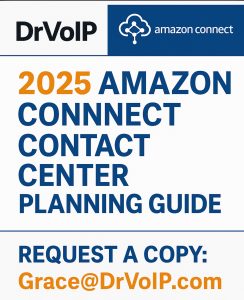You are now part of a global communications network… and nobody offered you stock options.
In a previous post, we talked about Apple AirTags and the “Find My” mesh network – that magical trick where a tiny coin-sized device can be located halfway across town, even though it has no GPS and barely any battery.
That magic works because your phone (and everyone else’s phone) is quietly doing radio reconnaissance duty in the background. Congratulations: you’re infrastructure.
Wait… how did I become a tracking tower?
Here’s the short version of how the Apple “Find My” style networks work:
- Your iPhone (or Mac, or iPad) periodically listens for tiny Bluetooth beacons from nearby Apple devices and accessories (like AirTags).
- When it hears one, it encrypts and forwards that beacon plus its own location to Apple’s servers.
- The owner of that AirTag can then open an app and see where their tag was last seen.
It’s clever, efficient, and in many cases genuinely helpful: lost keys, stolen bags, runaway luggage… all easier to find.
The part that gives people pause is this: millions of people are participating in this network without ever consciously saying, “Yes, I want to be a node in a global tracking grid.” It’s buried in settings and terms of service most humans will never read.
Amazon Sidewalk: your sidewalk, Amazon’s backhaul
Apple is not alone in the “crowd-sourced connectivity” business. Amazon has Sidewalk, a shared low-bandwidth network that uses compatible devices (like Echo speakers and some Ring cameras) to extend connectivity to low-power gadgets nearby.
In simple terms:
- Your Echo or Ring device can share a tiny slice of your internet bandwidth.
- Low-power devices (like certain sensors, trackers, or lights) can hop onto that shared network.
- Those devices can stay connected even when they’re outside normal Wi-Fi range.
Again, this is smart engineering. Sidewalk can help keep your smart lights or sensors connected at the edge of your property. It can help trackers report in from the driveway, mailbox, or street.
The catch is familiar: by default, many users found themselves “in” before they understood what they were in.
The hidden pattern: we keep building “secret” subscriber networks
AirTags and Sidewalk are just the easy, brand-name examples. The same basic pattern is showing up everywhere:
- Bluetooth trackers of all brands
- Smartphones that constantly scan for devices and networks
- Smart TVs, cars, doorbells, and appliances phoning home
- Apps that aggregate location, motion, and behavior data
Individually, each product solves a legitimate use case: find my stuff, monitor my home, track my delivery, optimize my commute. Collectively, they form a planet-scale sensor grid that data aggregators and analytics vendors absolutely adore.
Privacy isn’t exactly “dead.” It’s just become a tradable commodity. Companies buy and sell insights about people, places, and devices the way we used to buy weather reports and mailing lists.
“But they said it’s anonymous…”
You will often hear phrases like:
- “We only use aggregated, anonymized data.”
- “We don’t know who you are.”
- “We never sell your personal information.” (but they might sell information about your behavior)
To be fair, many engineers and product teams are genuinely trying to do the right thing and protect users. There are strong encryption schemes, privacy controls, and safety features in play.
However, the business model is simple:
- The more sensors and devices in the field, the richer the data.
- The richer the data, the more valuable the analytics.
- The more valuable the analytics, the more incentive there is to collect just a little bit more.
No villains required. No partisan politics required. Just basic economics.
Privacy is no longer a default setting. It’s a configuration option… hidden three menus deep.
So what exactly are they collecting?
Every ecosystem is different, but a few common themes show up across these systems:
- Location data – where devices are, where they’ve been, and how often they move.
- Proximity data – which devices tend to be near which other devices (great for building graphs of “who is near what, when”).
- Usage patterns – when devices are active, which features get used, and how often.
- Network data – signal strength, connectivity, and environmental conditions.
On their own, many of these data points are harmless. In aggregate, they can paint remarkably detailed pictures of real-world behavior. That’s why data aggregators, advertisers, and analytics vendors are so eager to buy, blend, and resell them.
What you can actually do about it (without moving to a cave)
This is the part where most posts say “delete everything and live in a cabin.” Practical, that is not.
Instead, treat your participation like a set of dials you can adjust:
- Check your device network sharing settings.
On Apple devices, look at your “Find My” and related location settings. On Amazon devices, review your Sidewalk options. Decide whether you’re comfortable being part of these networks and adjust accordingly. - Decide where the tradeoff is worth it.
If AirTags help you sleep at night when you travel, you might keep that ecosystem on and tighten others. You don’t have to say yes or no to everything. Pick your battles. - Limit “mystery apps” and unnecessary permissions.
An app that needs your location “always” probably doesn’t need it always. An app that wants access to everything may not deserve access to anything. - Remember: if you’re not paying, you’re probably inventory.
“Free” services are rarely free. They are subsidized by your time, your attention, and increasingly, your data exhaust. That doesn’t mean you shouldn’t use them – just use them with eyes open.
Engineers built it. Business models keep it alive.
From an engineering perspective, these systems are genuinely impressive. Turning billions of phones, speakers, cameras, and trackers into a cohesive sensor network is a marvel of radio design, cloud architecture, and edge computing.
From a business perspective, it’s a gold mine of insights about the physical world.
From a human perspective, it’s a reminder that we’ve quietly crossed a line: we are no longer just “users” of technology – we are part of the infrastructure that makes it valuable.
You don’t need to be paranoid. But you do need to be intentional.
Go take a look at your settings. See which hidden networks your gadgets have signed you up for. Dial them in to match your comfort level.
If you’re going to be part of a global sensor grid, you should at least know what you’re charging for rent.
DrVoIP – Where IT meets AI — in the cloud.

